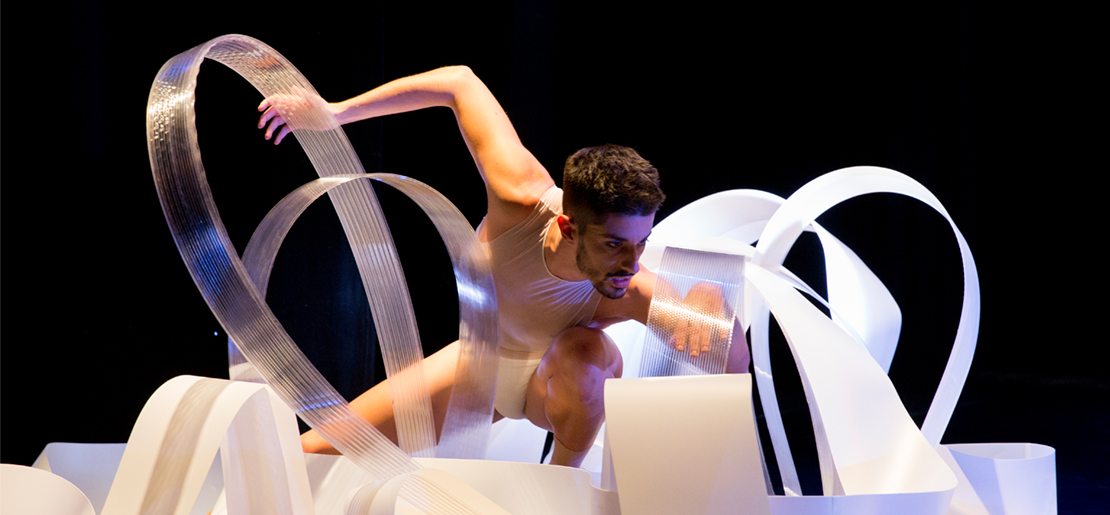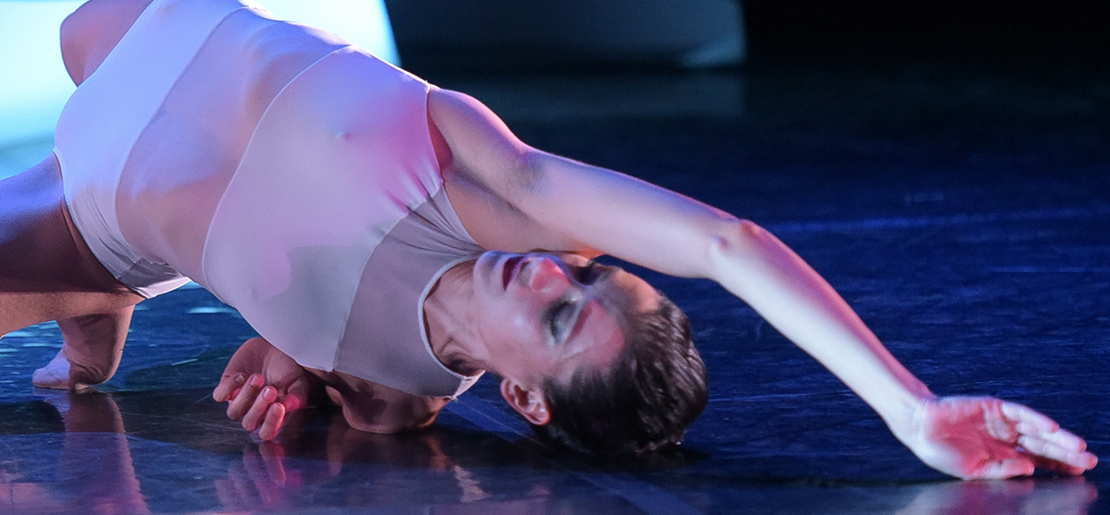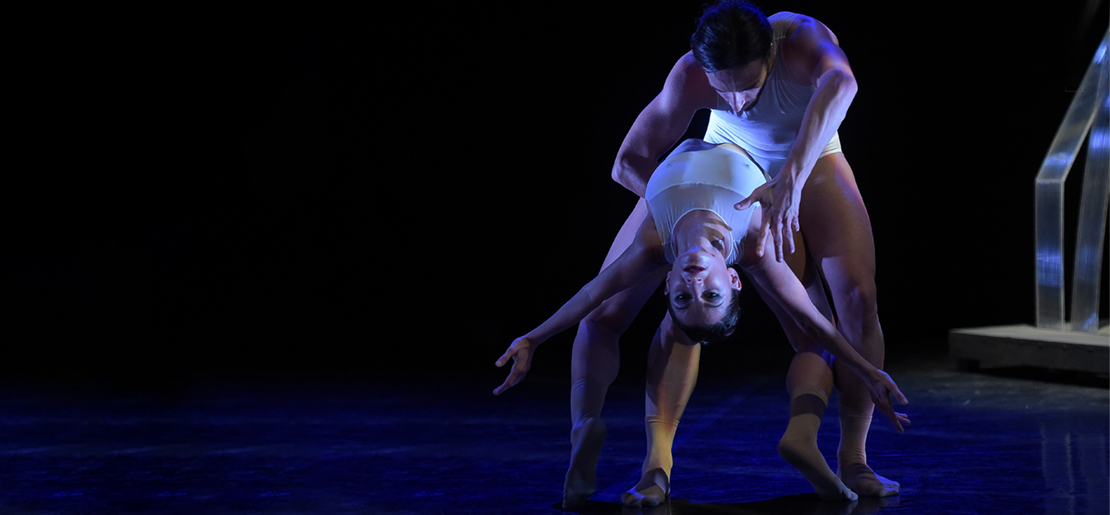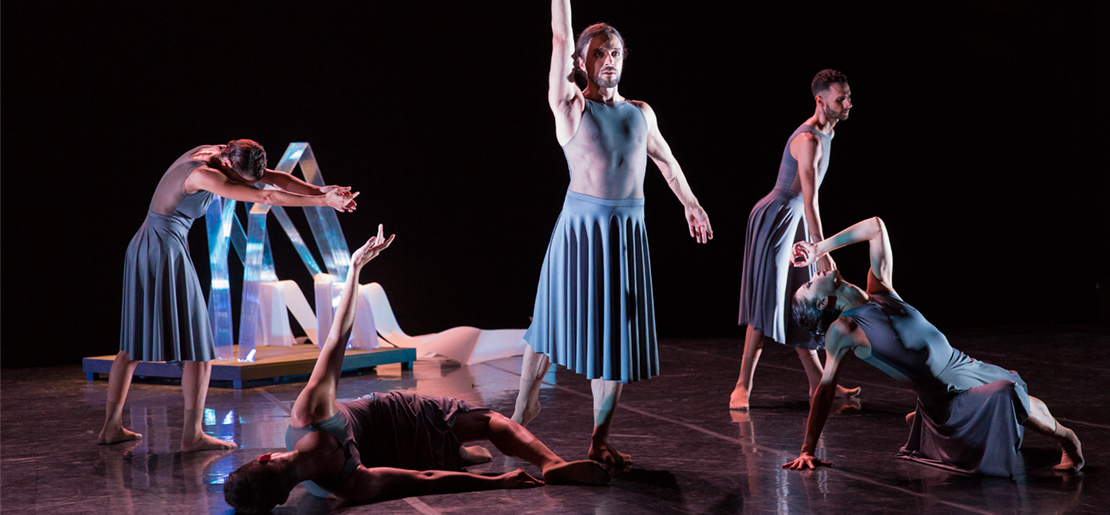photos Cristiano Castaldi - Maria Cristina Valeri
Credits
direction and choreography Ricky Bonavita
original music and sound space design Michelangelo Lupone
interactive scenography Licia Galizia
dancers Enrica Felici, Francesca Schipani, Emiliano Perazzinii, Yari Molinari, Valerio De Vita
light design Danila Blasi
costumes Daniele Amenta e Yari Molinari
choreography assistant Valerio De Vita
interactive systems Silvia Lanzalone
music assistant Michele Papa
production PinDoc 2017
with contribution of MiC, Sicily Region and Lazio Region
in collaboration with CRM - Centro Ricerche Musicali and PAC Progetto Arte Contemporanea per il Festival ArteScienza 2017
Adaptive bodies
music - dance - interactive scene
Corpus 2.0 è una libera indagine sul corpo come mezzo espressivo, decontestualizzato da una specifica narrazione, e inserito in un contesto intermediale, ma sempre dispensatore di moti interiori, di azioni e reazioni, creatore di suggestioni fisiche come vuole l'indirizzo stilistico di Bonavita e di Lupone.
In Corpus 2.0 Bonavita and Lupone treat the human body freely as a means of expression, appearing in a cross-disciplinary context, without being the subject of a specific narration. However the body remains a dispenser of inner motions, actions and reactions and a creator of physical suggestions.
The interactive scene is designed by the sculptress Licia Galizia as a dynamic room where music, choreography and electronic technologies act in a symbiotic way that underlines at the same time the three-dimensionality of bodies and movement, and the emotional suggestions of the music, immaterial by its nature; emphasizing the expressive possibilities in an abstract and surreal performance.
Corpus 2.0 is the result of the fruitful artistic collaboration between the choreographer Ricky Bonavita and the composer Michelangelo Lupone started in 2014. Together the two artists created several productions among the activities of Compagnia Excursus and CRM - Centro Ricerche Musicali, and cooperating with AND - Accademia Nazionale Danza and Conservatorio di Santa Cecilia they also promoted a wider project that allowed young choreographers and composers to create and collaborate in a professional context.




